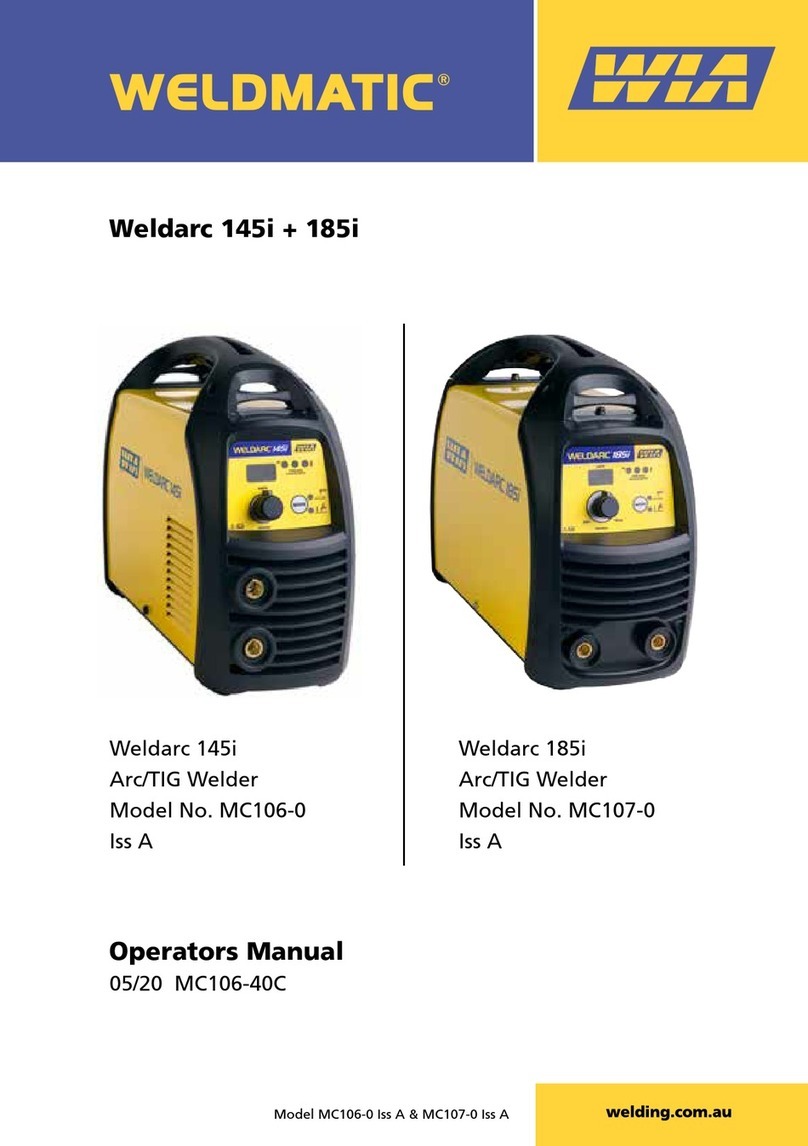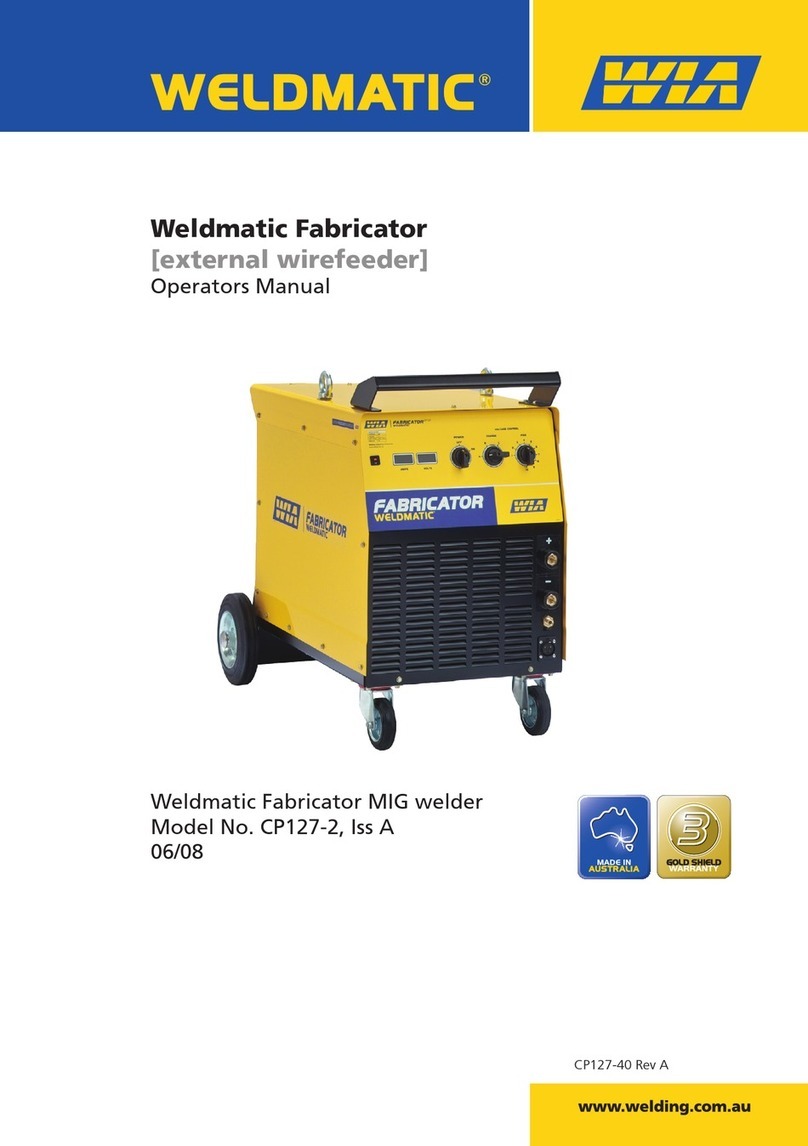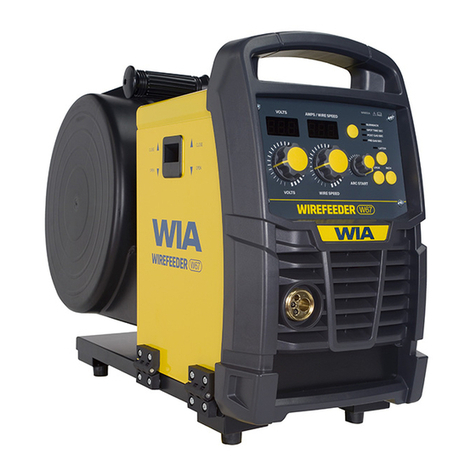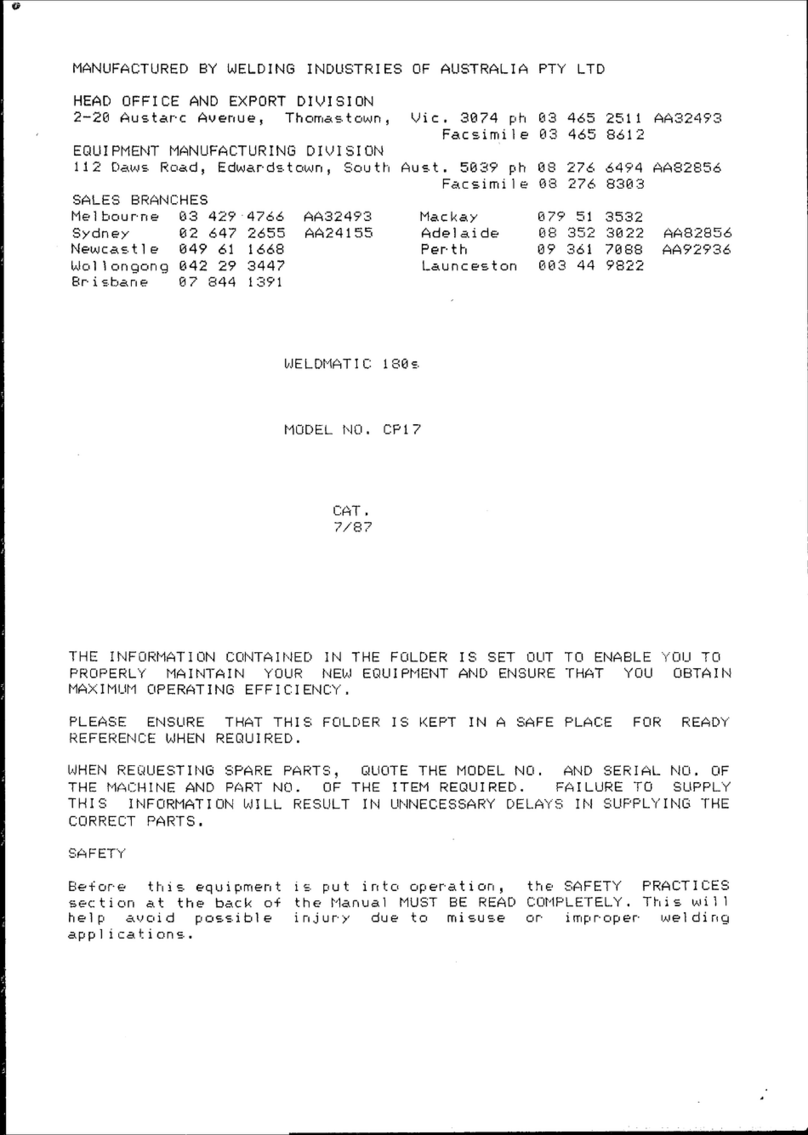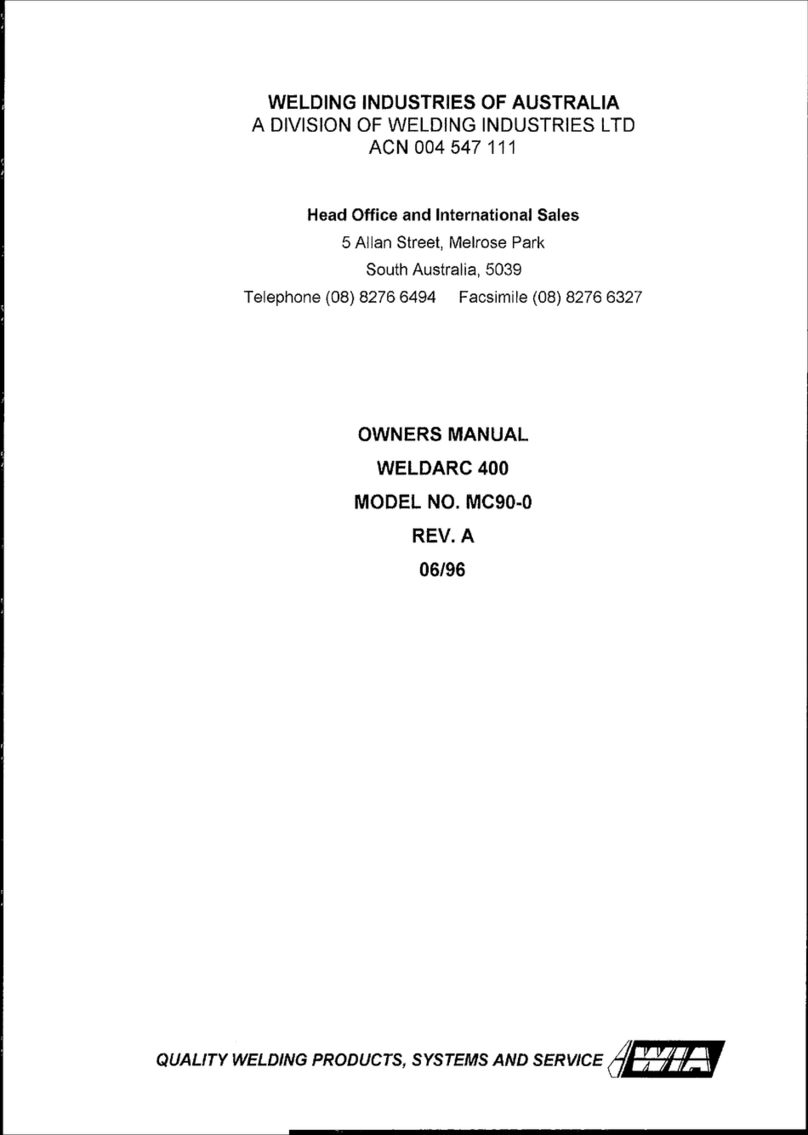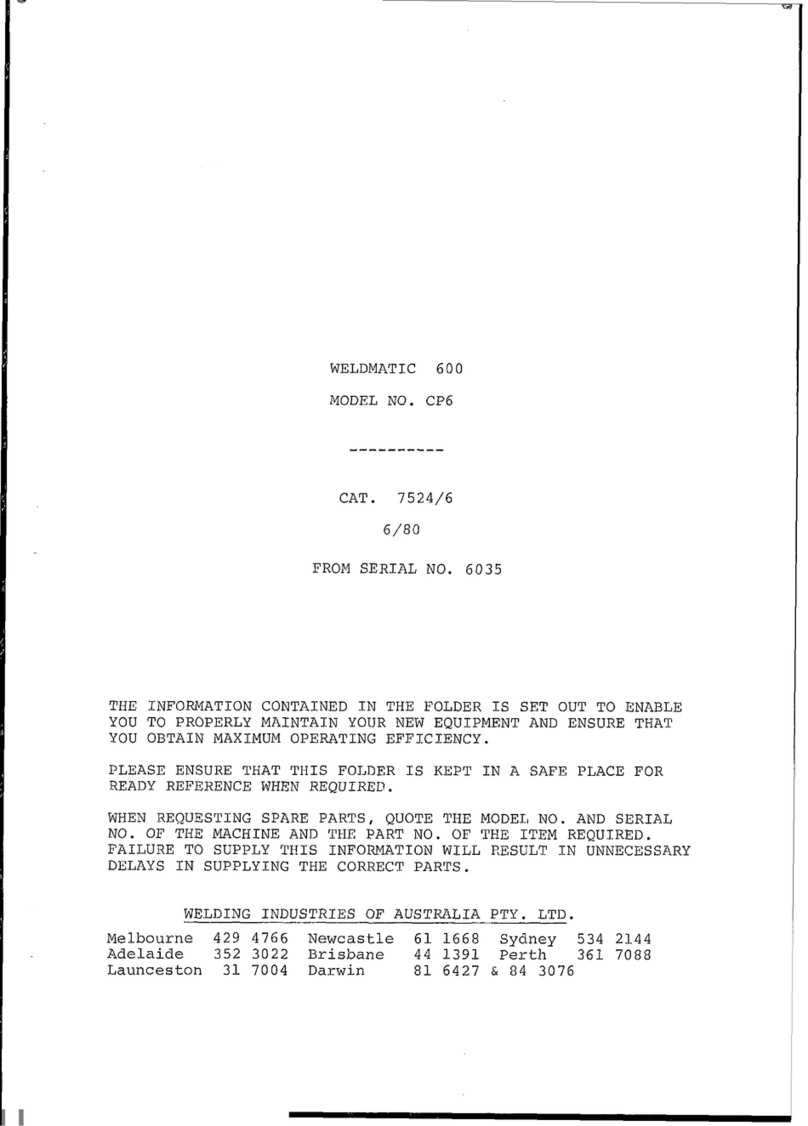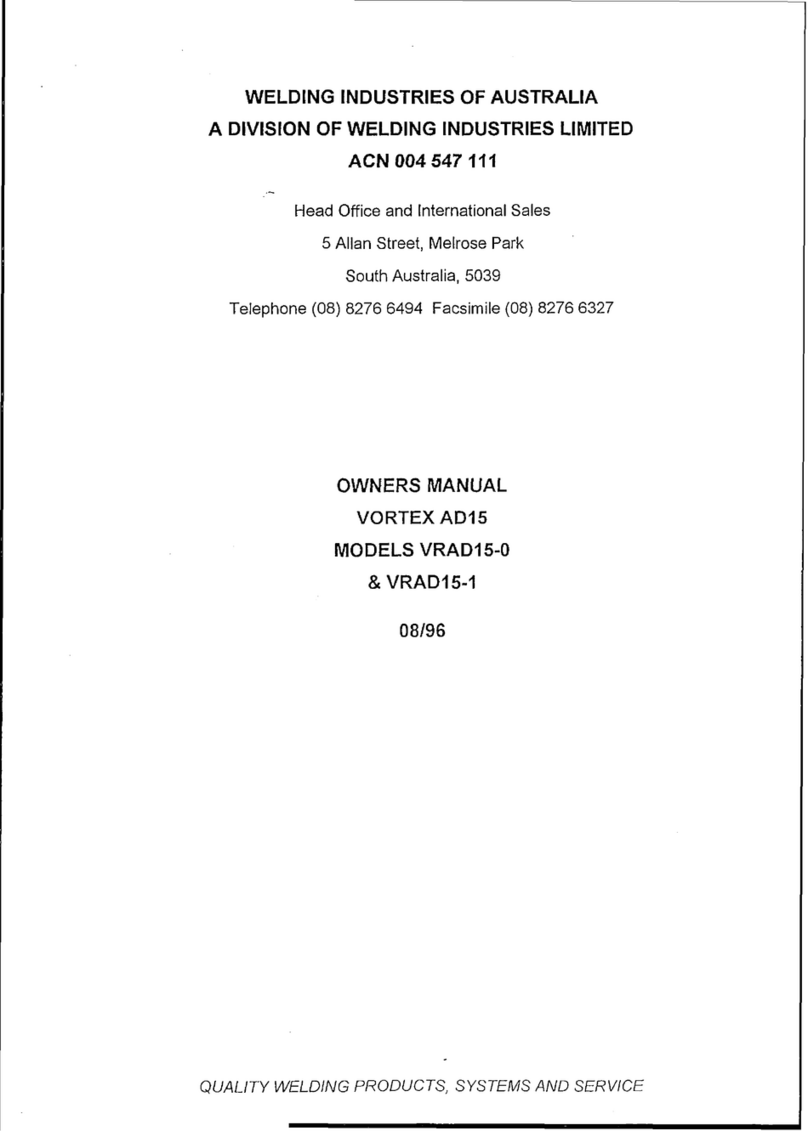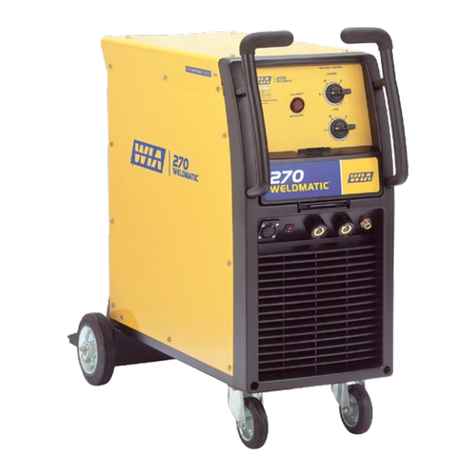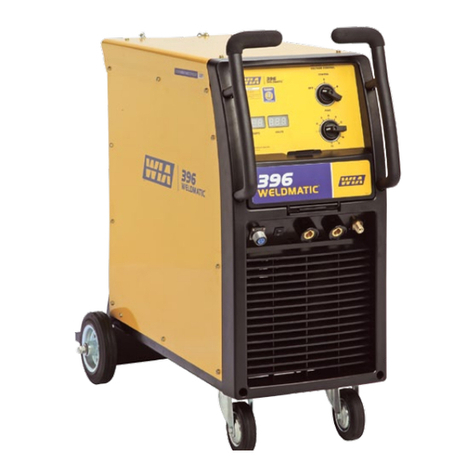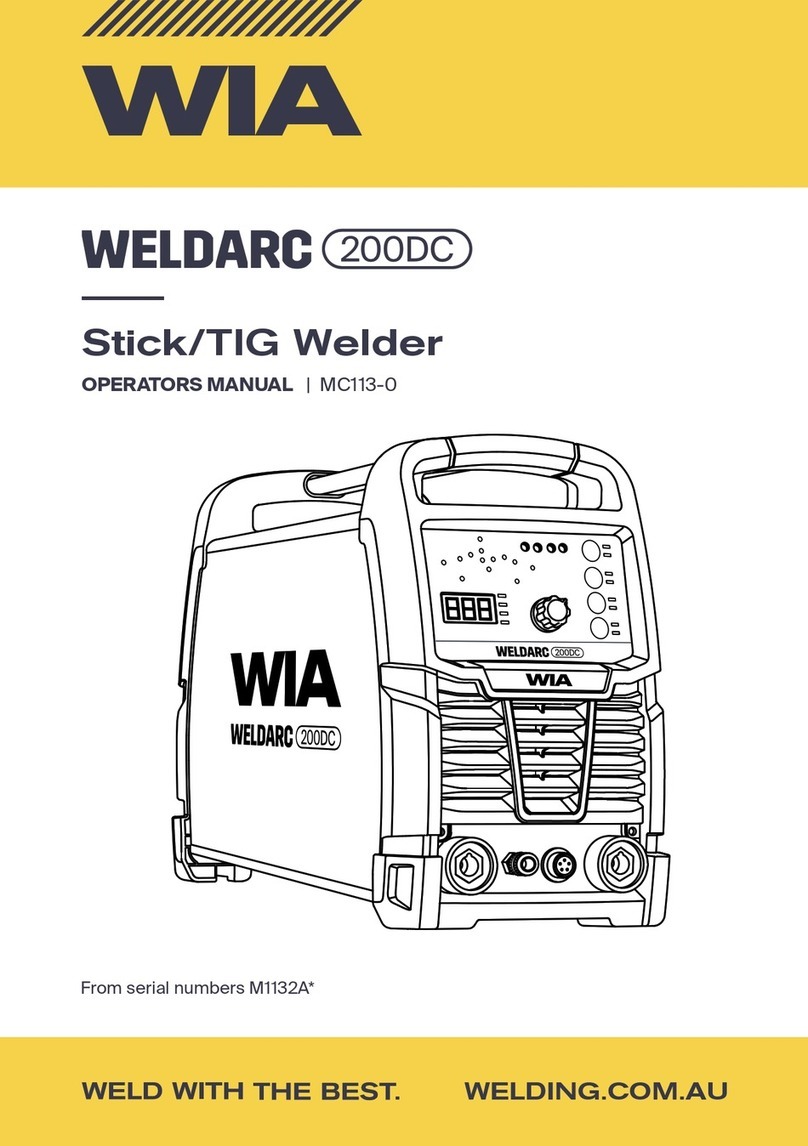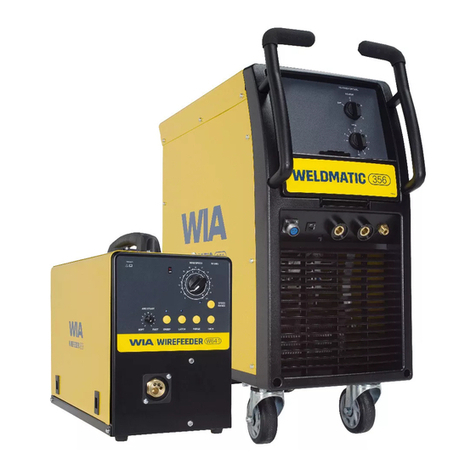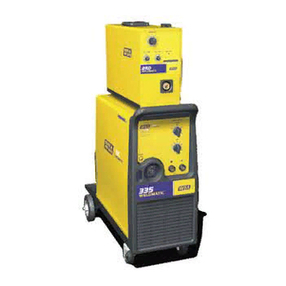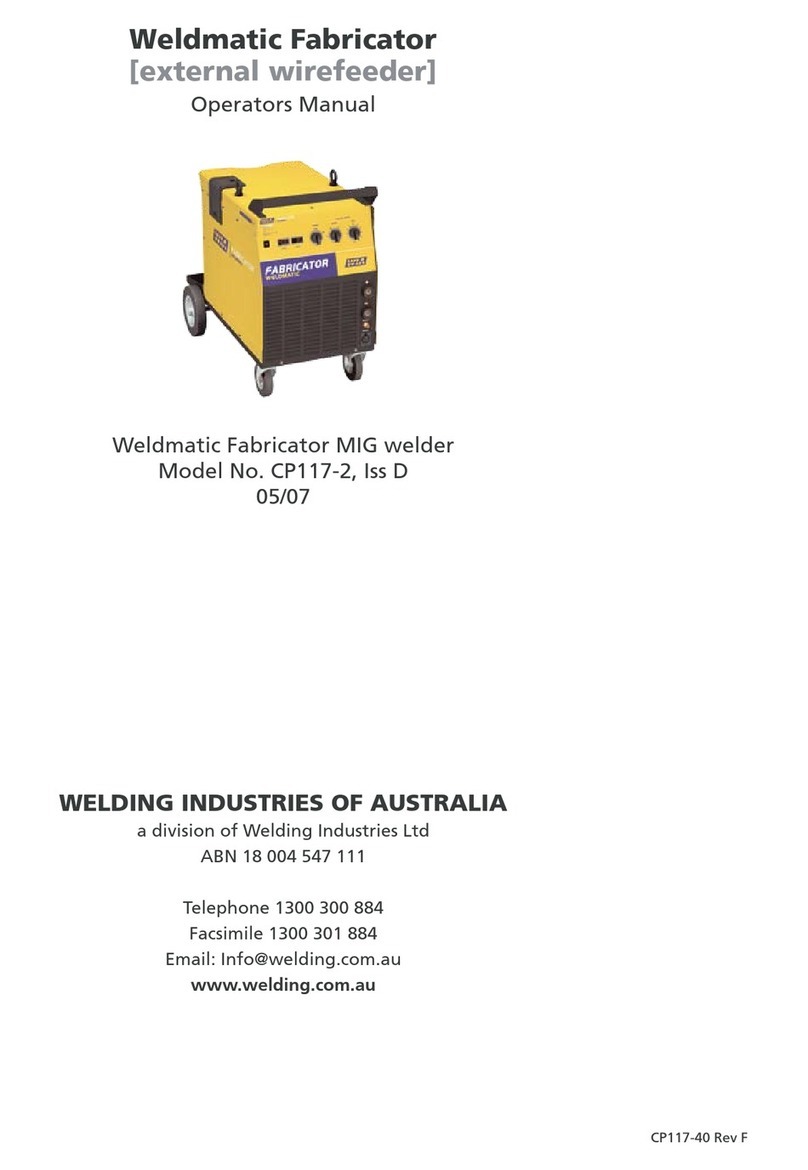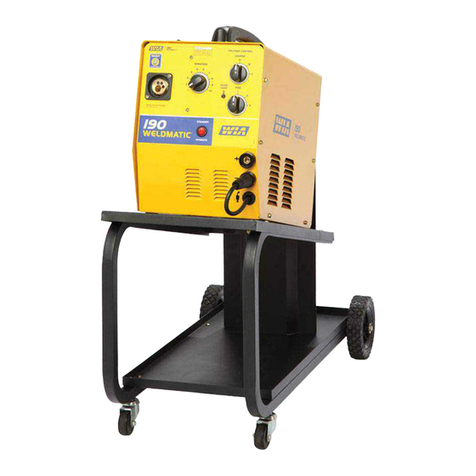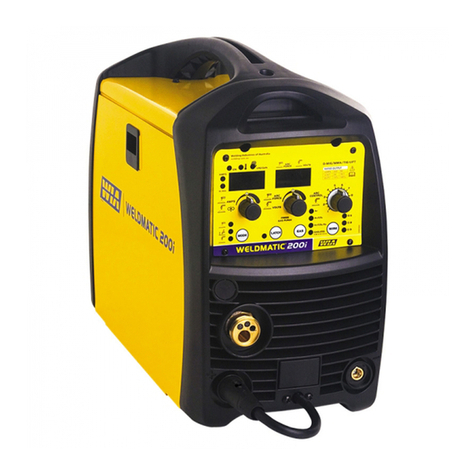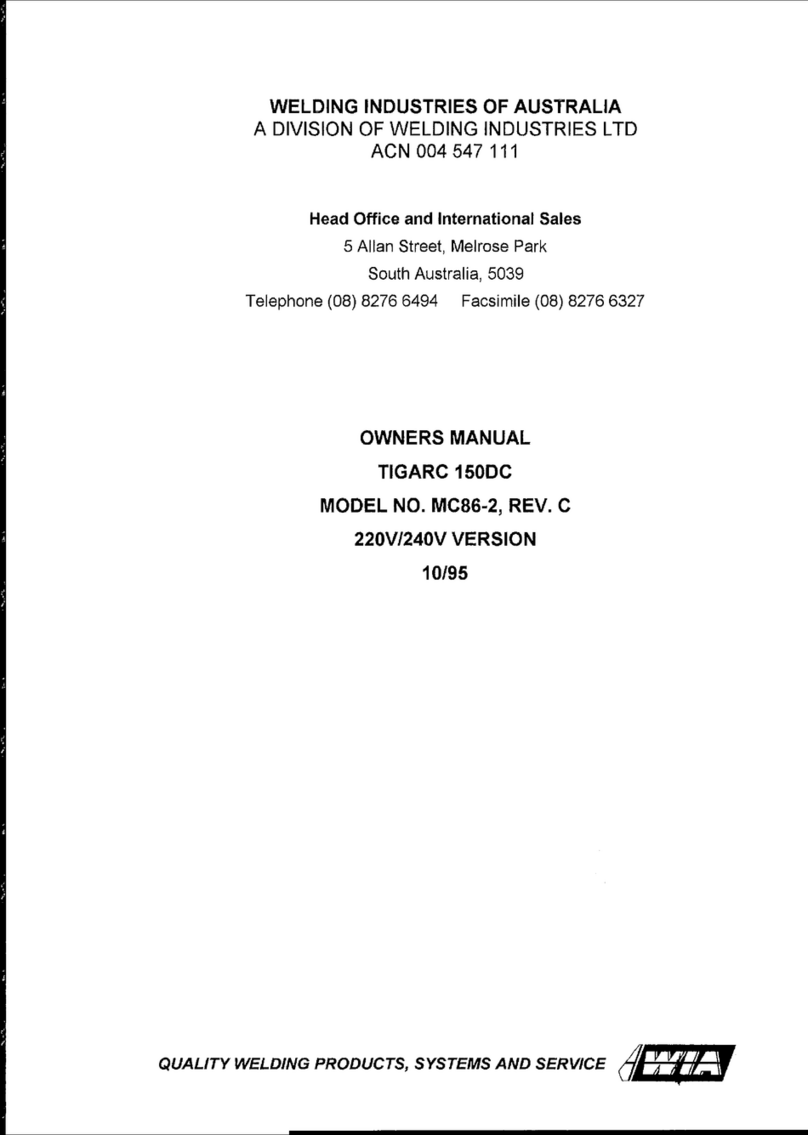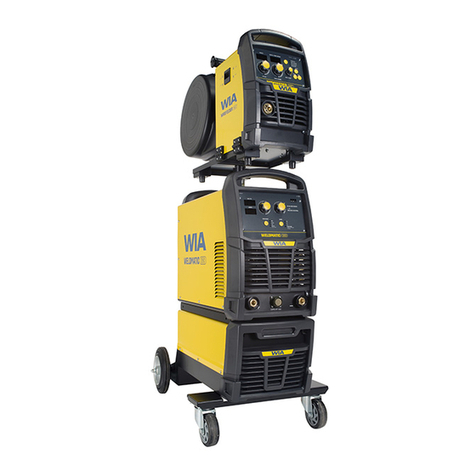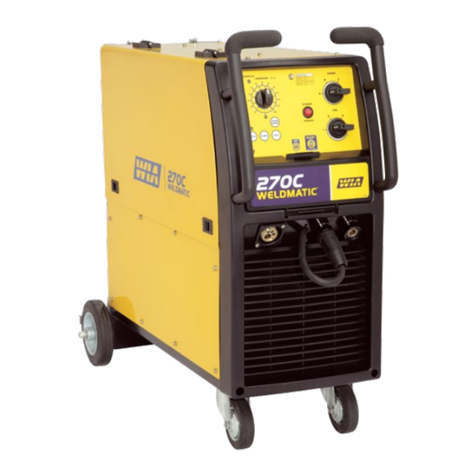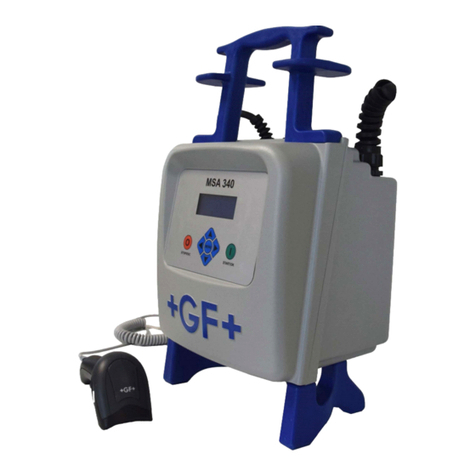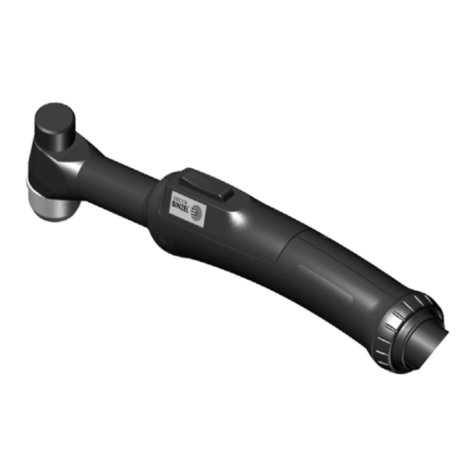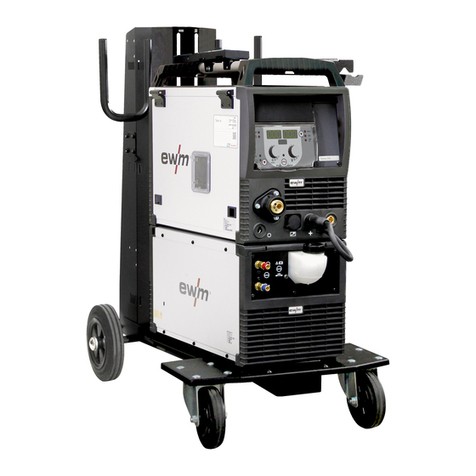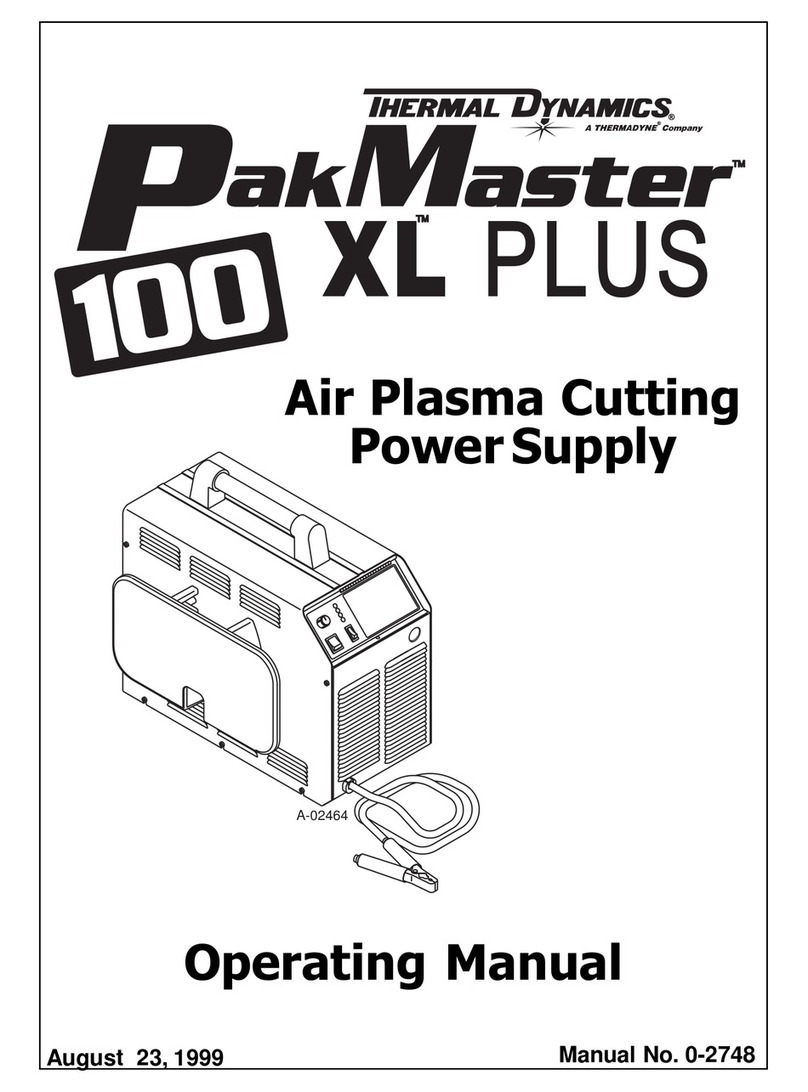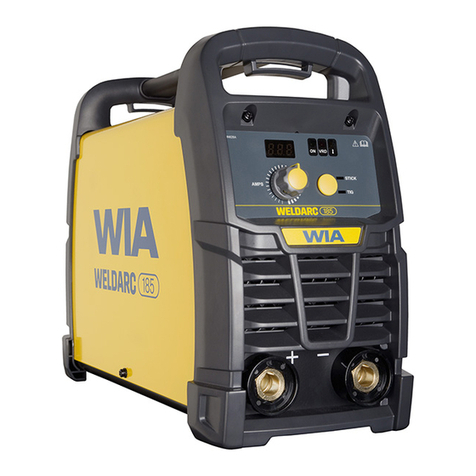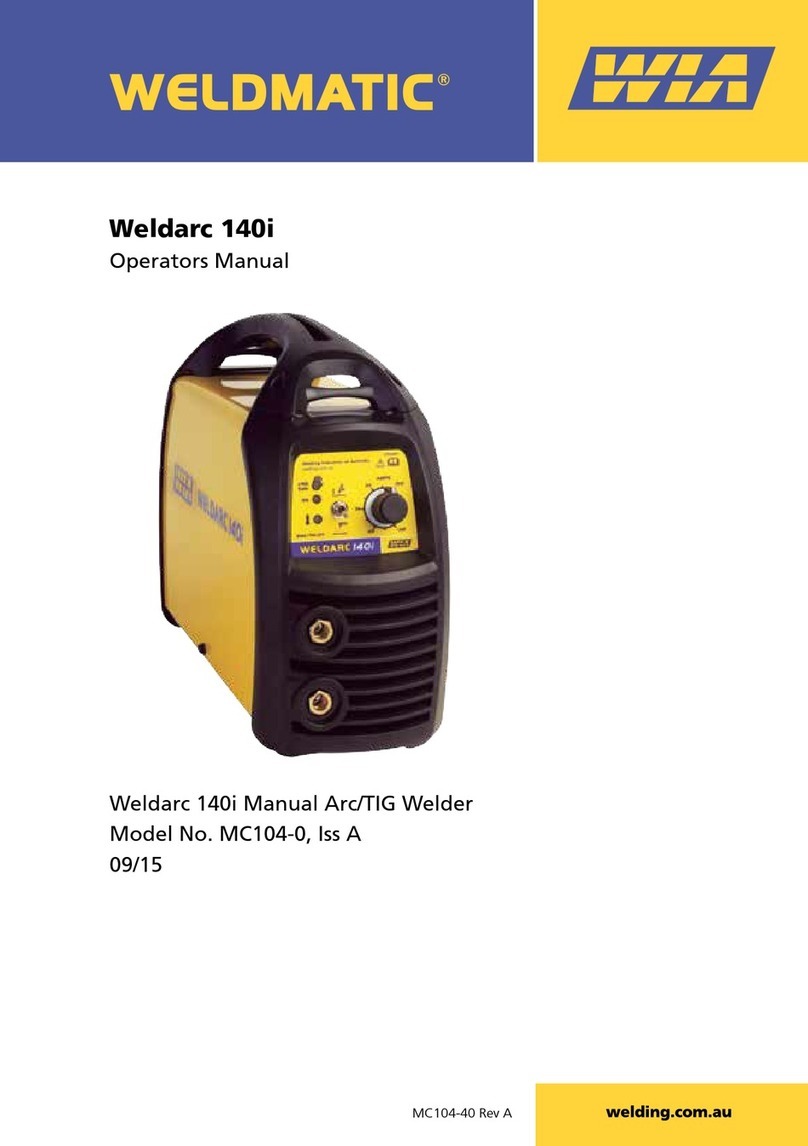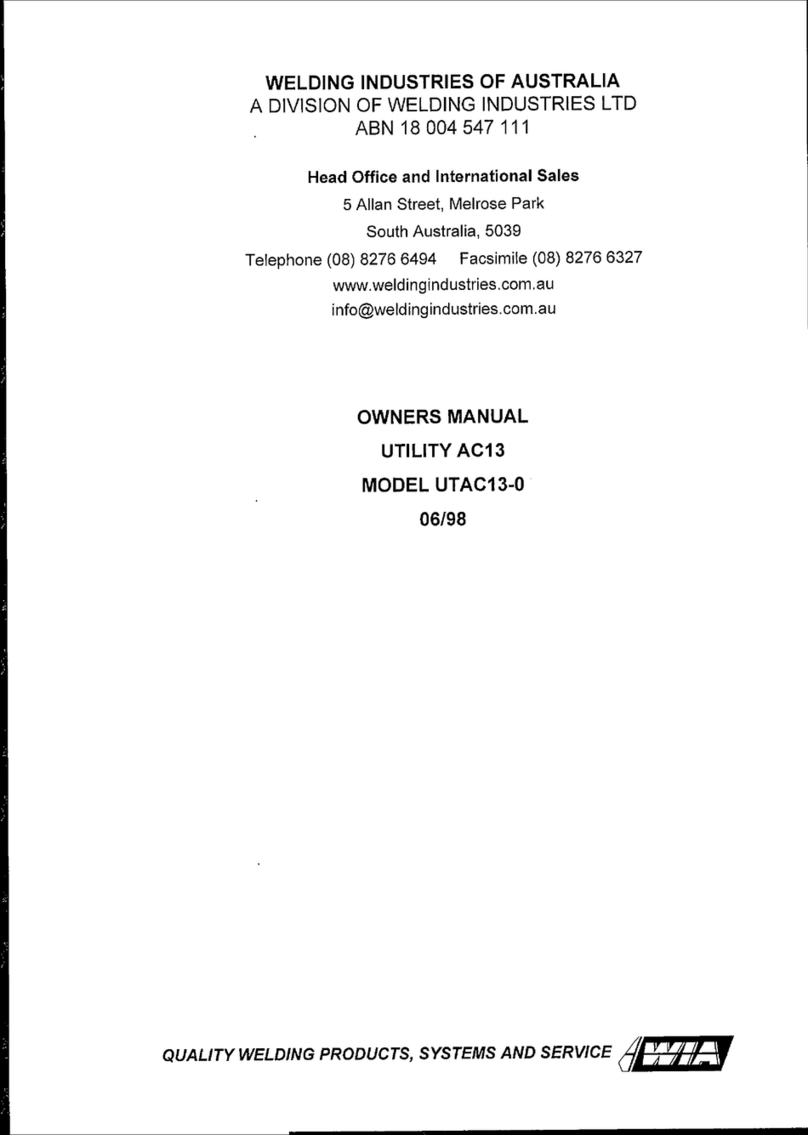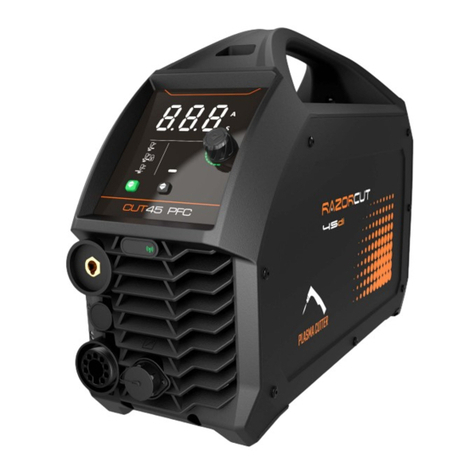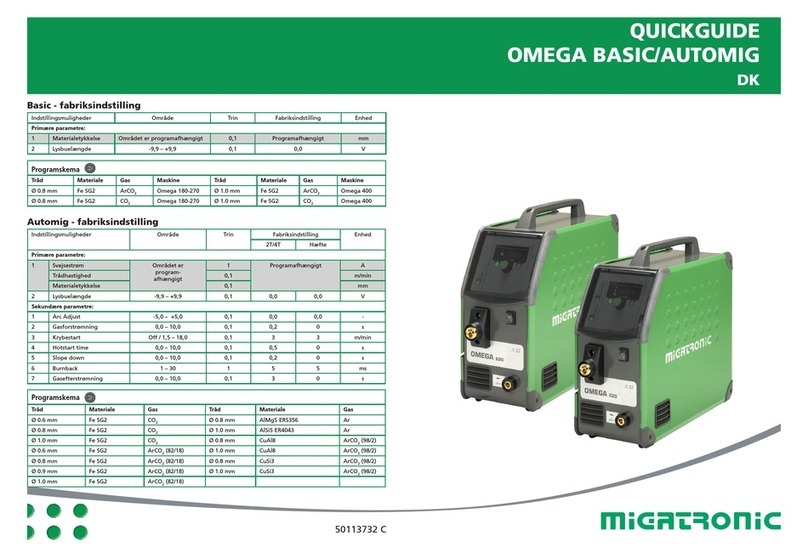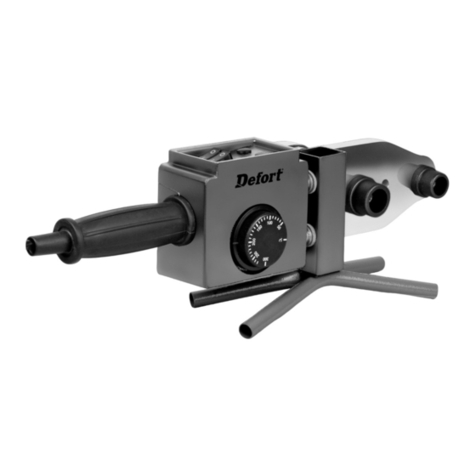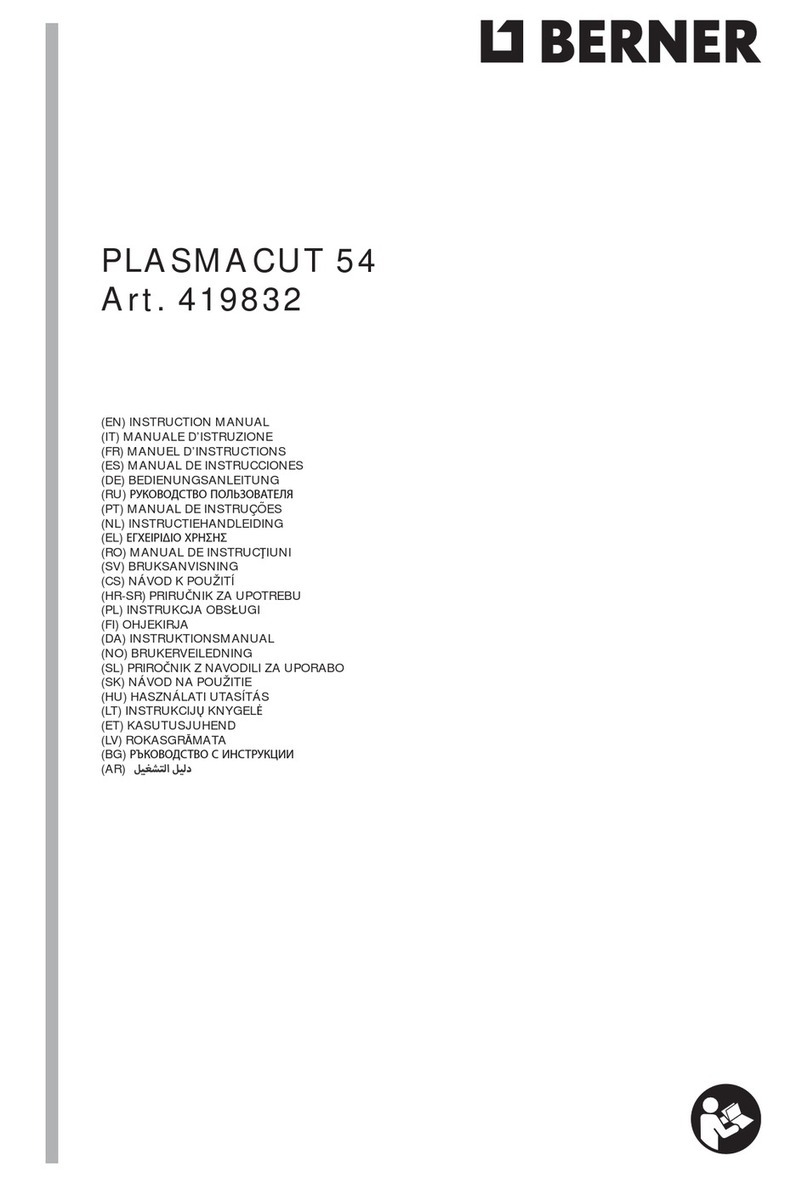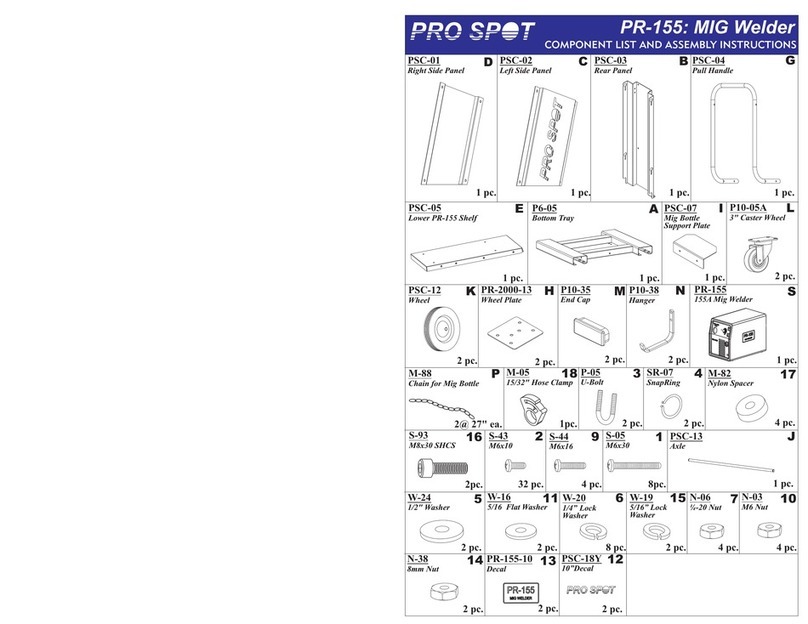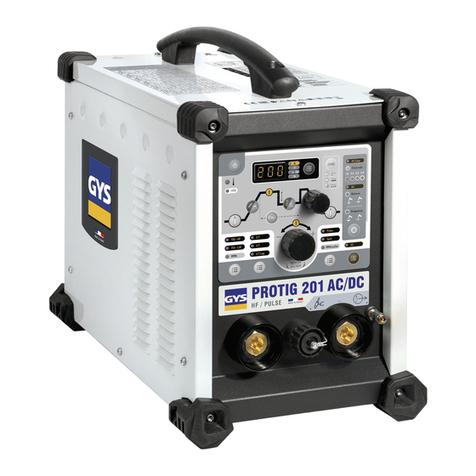
page
8
TIGARC
140DC
MANUAL
To
strike the arc, drag the end of the electrode along the workpiece as if
strikinga match. As the arc initiates,
lift
the
electrode slightly away, aiming to
establish an arc length of approximately 3mm.
As
the electrode end is consumed,
feed the electrode into thearc in order to maintain a constant arc length. As a
generalrule, the arc should be held as short as possible while still giving stable
burn off and good weld appearance. An arc which is too long causes an unwieldy
flow
of
metal with a rough weld apFearance and reduced penetration. An arc too
short leads to a narrow weld deposit and "stuttery" arc characteristic, and the
electrode is liable
to
freeze onto the workpiece.
As the solidified weld deposit forms, move the end of the electrode slowly
along the weld path, aiming to maintaina
poot
of moltenweld metal behind the arc.
Decreasing this rate
of
travel will result in a wider weld deposit, and similarly
increasing
it
will narrow the weld deposit. Always fit1 the crater which tends to form
at the endof a weld deposit, by pausing momentarily before withdrawing the
electrode to break the arc. Unfilled craters are a point of weakness, and can lead
toweld cracking.
onstantmolten
pool
widthmeans
ONSTANT
beadwidth
StrikingthearcMaintainsteady
arc
length
2
FIGURE
4.
MANUAL METAL
ARC
WELDING.
5.
MAINTENANCE
Care should be taken to prevent excessive build-up of dust and dirt within the
welding power source. It isrecommendedthat at regular intervals,according to the
prevailing conditions, the machine covers be removed and any accumulated dust
be removedby the use of dry, low pressurecompressedair, or avacuum cleaner.
6.
FAULT FINDING, NOWELDING CURRENT
Check that Mains Supply is available at the TIGARC 140DC Power Source, i.e.
that the fan
is
running. Check for continuity of the welding current circuit, i.e., work
lead,work clamp and electrode holder.
TheTIGARC
140DC
welding power source incorporates an inbuilt protection
device which will trip if the unit is overloaded. In this event the machine will not
deliver welding current until the overload device hasbeenMANUALLYreset.The
overload device cannot be reset immediately after it has tripped. 8efore resetting,
establish and correct the causeof the overload condition. Thereset button is
located on the rear panel,just above the Supply Flexible Cableentry.
If
equipment failure
is
suspected, forward the unit to yournearest WIASales
and ServiceBranch, or qualified serviceagent.
